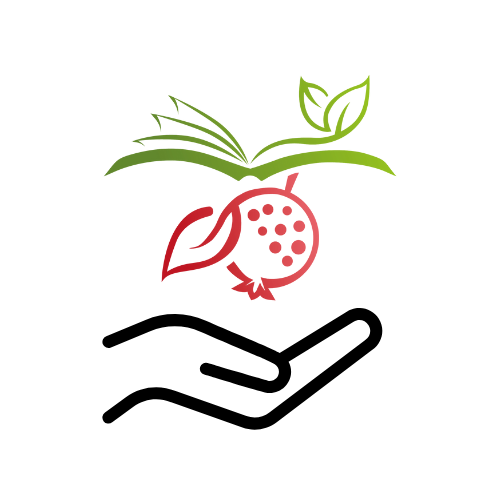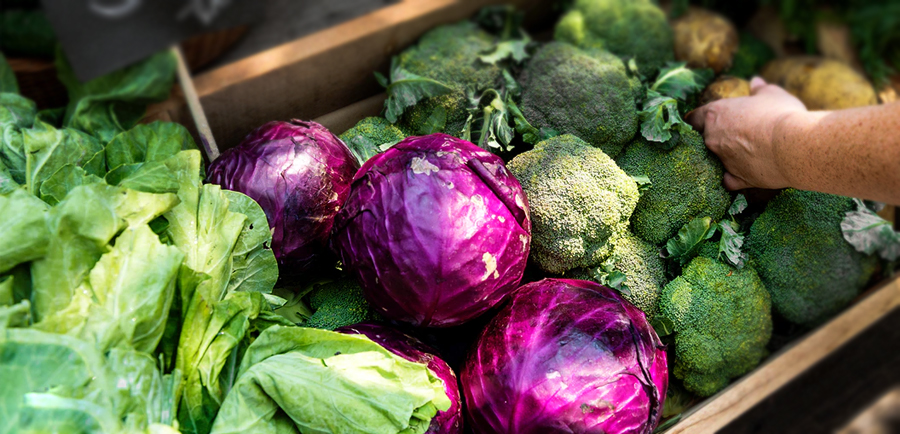
Isn’t it amazing that food can be both your source of nourishment and medicine?
When you eat food as God has designed them, specifically whole foods such as fruit and vegetables, you are actually feeding the body and allowing it to grow and develop properly.
One of these such foods, bursting with nutrients and health benefits, are cruciferous or Brassica vegetables.
If you have been following my YouTube channel and reading my previous blog posts, you would know that I am a big proponent of cruciferous vegetables. There are also numerous studies that prove how these vegetables can help fight a number of diseases including prostate, breast, and colorectal cancer!
They are named cruciferous because these vegetables have cross-shaped flowers. They resemble Christ’s crucifix or cross, and, in a way, these vegetables save us from diseases the way Jesus Christ has redeemed humankind from sin when He died on the cross.
So today, let’s go deeper as we define and study cruciferous, discover their health benefits, and how you can prepare and use these vegetables to make them a part of a daily diet.
Cruciferous Vegetables as Antiangiogenesis Agents
What is an inexpensive and simple way to fight cancer? Have you heard of the word angiogenesis?
We hear that word when we talk about angioplasty surgeries and Genesis, which we know as the first book of the Bible.
Angiogenesis means the formation of new blood vessels.
For instance, in pregnancy when a woman has conceived, the baby implants itself into the uterus. Angiogenesis is that lifeline between the mother and her baby through the umbilical cord.
Without this cord, the newly-developed baby would die.
Cancer works in a similar way. Tumor cells develop in the body due to an excessive and regular consumption of processed foods, medications, and exposure to harmful chemicals. Things such as pollutants, home cleaners, and the like, all increase your chances of developing a tumor.
But here’s the thing – cancerous tumors can be in your body for 20 years or so before it would even cause any symptoms. Based on a study, it could take a decade or so before symptoms occur due to a tumor. It could take even longer in the case of prostate cancer.
This is why you may be going about your usual ways, not realizing that there are cancer cells inside of you like a ticking time bomb ready to explode.
Once cancer becomes stimulated by stress, or there is a failure in your immune system, these cancer cells will then send out signals to the nearby blood vessels. When this happens, the blood vessels will grow outwards, meaning that the tumor now has a lifeline that can transport those tumor cells throughout the entire body.
And so they grow and spread throughout your body. At this point, nothing can ever prevent it from growing and from traveling, increasing your cancer risk.
Well, except for one thing…
Antiangiogenesis foods can help inhibit this growth. These power foods can minimize your cancer risk, naturally. According to studies by health experts, these natural angiogenesis inhibitors also show impressive anti cancer activities.
One of the more potent antiangiogenic foods are cruciferous vegetables. Studies have been performed that confirm the cancer fighting properties of cruciferous vegetables.
I personally experienced this amazing power of cruciferous vegetables in fighting cancer when my mom was diagnosed with this disease. Here’s that story…
This is why I strongly believe everyone should eat more of these vegetables each day.

The Daniel Fast Book
- Complete Menu Plan
- Comprehensive Shopping List
- Over 45 recipes
- Daily Devotions To Uplift Your Soul
Buy on Amazon Buy on Website Online Course – $27
Health Benefits of Cruciferous Vegetables
According to the National Cancer Institute, cruciferous vegetables have more than just cancer fighting benefits. These vegetables also help prevent and address inflammation, boost your immune system, and strengthen your cells.
One of the studies conducted by researchers on the link between cruciferous and cancer prevention proved just how valuable it is to add these vegetables to our daily diet.
Cruciferous vegetables for instance:
-
Protect cells from free radical and DNA damage
-
Have anti-inflammatory, antibacterial, and antiviral effects
-
Help inactivate and prevent carcinogens from wreaking havoc to the body
-
Cruciferous vegetables inhibit the formation of tumor blood vessels or angiogenesis
-
Reduces cancer risk while enhancing your body’s nutrition
Cruciferous Plants for Cancer Prevention
Let’s go back to antiangiogenesis components of cruciferous vegetables.
Cruciferous plants have unique sulfur-containing compounds responsible for their pungent flavor. These compounds are found in their cell walls and when you chop them or blend them up in your smoothie this breaks the cell walls.
What happens next is impressive…
The chemical reaction that occurs converts those sulfur-containing compounds into an army!
YES! An army of healthy compounds which are proven to have powerful, immune-boosting effects with anti-cancer activities.
Now you have an army working for you, your very own defense system. And God is the one who created it just for you!
How Many Servings of Cruciferous Vegetables Should You Eat
According to a scientific study, 3 servings of brassica or cruciferous vegetables each weekreduces prostate cancer risk by as much as 41%.
This is why the Dietary Guidelines for Americans recommend consuming vegetables including cruciferous ones. An increase in your vegetable intake ensures not only your overall health but also reduces your risk of degenerative diseases, cancers, and cardiovascular disorders.
How do you get these 3-servings of cruciferous vegetables each week?
Annette on Social Media
Top 10 Cruciferous Vegetables List
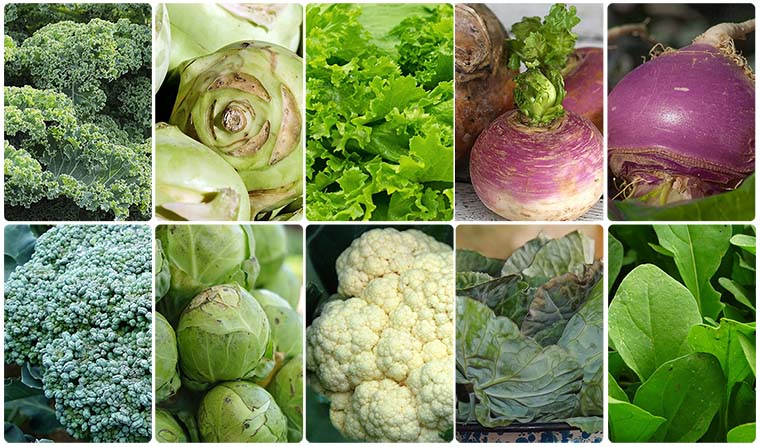
It is so amazing what God has given us to heal ourselves when we have the right nutrition!
And it is so widely available too! Cruciferous vegetables are available at the produce market, the farmer’s market, and at your local grocery store.
Now it’s time for my TOP 10 cruciferous vegetables.
1. ARUGULA

Arugula has a distinct taste, with it being a bit peppery and pungent. It is also known as salad rocket, Italian cress, and rucola. This vegetable originated in the Mediterranean.
This is one of the most highly-regarded cruciferous vegetables alongside of bok choy, kale, mustard greens, and broccoli specifically for cancer prevention and reduced cancer risk.
What are the benefits of arugula?
ust like all cruciferous vegetables, arugula is noted for its cancer-fighting properties. In a scientific study conducted on the anticancer qualities of arugula, it was observed that arugula helped patients suffering from pancreatic cancer.
It is also dense in nutrients, as well as phytochemicals and fiber. There is very little amount of sugar in this vegetable, while also being low in calories, carbs, and fat.
It is so abundant in vitamins and minerals! Some vital nutrients contained in arugula are calcium, vitamin C, A, K, folate, and potassium. It also supports the immune system, promotes eye health, and helps with bone health and muscle function.
Pregnant women should also eat more arugula as its folate content is essential for preventing spina bifida to their unborn child, which is a defect in the neural tube.
How to Use It
here are many ways to enjoy arugula. You can eat it raw as a topping to your nachos, sandwiches, wraps, and pizzas.
You can also serve arugula as a side salad and just add some salt, pepper, and extra virgin olive oil.
If you need an alternative to your basil for pesto, you can also use arugula. Just add some pine nuts and parmesan cheese to your pasta noodles and it’s ready to go!
Cooked arugula is more mellow in flavor and is a perfect addition to a goat cheese and squash pasta.
2. BROCCOLI

Another cruciferous vegetable, broccoli is a bit like a miniature tree in appearance. There are three main varieties of this vegetable including sprouting broccoli, calabrese, and purple.
Benefits of Broccoli
Broccoli is rich in nutrient content. It has a lot of minerals, vitamins, bioactive compounds, and fiber.
It is also loaded with phytonutrients, which can help promote health and reduce your risk of cancer, according to studies by the American Institute for Cancer Research.
There are potent antioxidants within broccoli and the molecules help neutralize or inhibit cell damage due to free radicals.
It also contains glucoraphanin, a special compound that is converted into sulforaphane or an antioxidant which offers numerous benefits such as reduced cholesterol levels, balanced sugar levels, and minimizes oxidative stress. This conversion occurs when the vegetable is digested by the body.
As for the nutritive value, broccoli contains protein, fiber, vitamin C, K, B9, A, potassium, selenium, and phosphorus.
How to Use It
The best way to eat broccoli is raw as this does not reduce the soluble fiber and vitamin C, which often happens when you cook it by boiling, steaming, and stir-frying. The cooking method with the least negative effect, though, is steaming.
If you want to eat it raw, you can add it to your smoothie, which also gives your beverage that lovely green color while retaining the nutrients in it.
Free E-Book
7 Steps to Amazing Biblical Health
A NEW AND IMPROVED YOU!
3. BRUSSEL SPROUTS
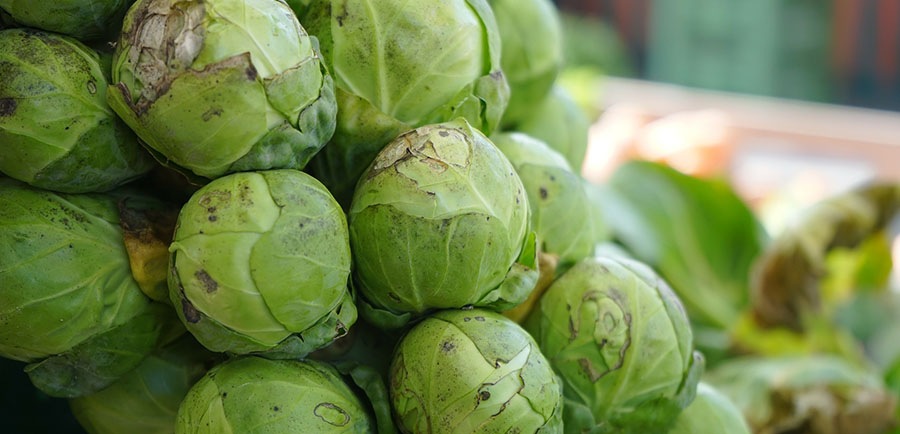
Brussels Sprouts are another cruciferous vegetable, just like mustard greens, bok choy, cauliflower, and collard greens. They look like mini cabbages, which you cut up, clean, and cook to add to your salad or as a main course.
Benefits of Brussel Sprouts
Studies have shown that these vegetables are rich in fiber, vitamins, minerals, and antioxidants. They are also low in calories, making them excellent for those who are trying to lose weight.
Some vital nutrients that brussel sprouts contain are vitamin K, A, C, fiber, carbs, folate, and manganese. The primary antioxidant in brussel sprouts is kaempferol, which has been noted in a scientific study for its health-promoting property while reducing oxidative stress and risks of cancer, such as breast cancer and prostate cancer.
How to Use it
Brussels Sprouts are definitely a great addition to your diet. You can incorporate it easily into your entrees and side dishes and eat them up baked, sauteed, roasted, and boiled.
These vegetables also make an amazing salad, and you may want to check out my Brussels Sprout salad recipe that is an excellent side dish!
Other ways to enjoy Brussels Sprouts is by adding it to your pasta, stir-fried dish, and fritatas.
4. CAULIFLOWER

Cauliflower is a powerhouse of nutrients including B-vitamins, fiber, phytonutrients and antioxidants. It has fiber for healthy digestion and weight loss, as well as choline to boost memory and learning.
A higher fruit and vegetable intake in your diet, specifically by eating more cauliflower each day, will help boost your nutrition and prevent cancer cells from taking over your body.
Nutritional Value of Cauliflower
According to the USDA National Nutrient Database a serving of raw cauliflower that’s chopped up and weighing about 107 grams contains just 27 calories but an abundance of protein, magnesium, phosphorus, folate, potassium, vitamin C, and vitamin K.
In addition, a cup of raw cauliflower has 77 percent vitamin C, 20 percent vitamin K, and 10 percent vitamin B6 and folate. There are also smaller amounts of calcium, iron, pantothenic acid, niacin, manganese, and riboflavin.
Cauliflower is rich in fiber and water, which helps prevent constipation. It maintains the health of your digestive tract, which reduces your risk of colorectal cancer.
Studies have also shown how the vitamin C components in cauliflower also regulates and strengthens the immune system. These also help with inflammation, as well as cancer, obesity, diabetes, and cardiovascular disease.
How to Use it
Cauliflower can be enjoyed in numerous ways. You can steam or roast it as a side dish or even bake it in cheese sauce like cauliflower cheese.
It is also a great and healthier alternative to rice. My cauliflower rice and pesto recipe is a must-try!
This vegetable is also great when roasted with broccoli, just like my roasted broccoli and cauliflower recipe.
Other ways to enjoy this cruciferous veg is by frying it until it’s golden brown then adding it to your rice dishes or your curry.
5. COLLARD GREENS
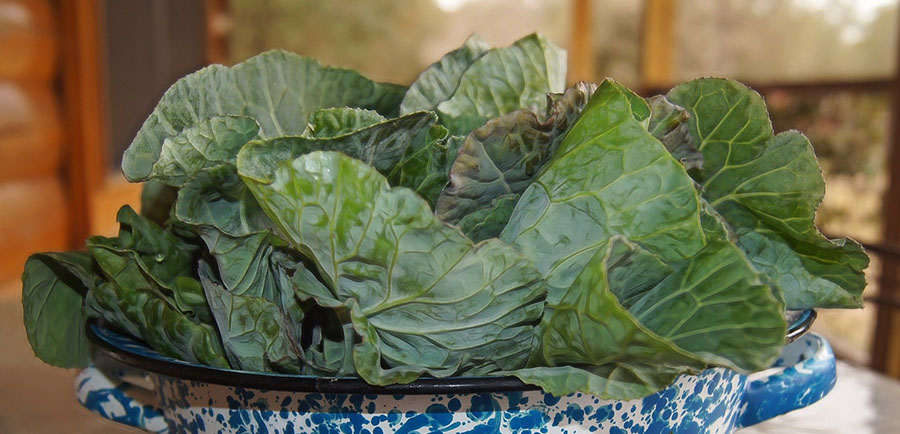
Collard greens deserve a special spot in your daily diet. It is rich in nutrients that play a valuable role in a healthy body.
These vegetables are nutrient-dense while at the same time being low in calories, so these are perfect for helping you achieve your weight loss goals.
Benefits of Collard Greens
Collard greens support bone health. They are rich in vitamin K, which reduces your risk of a bone fracture and osteoporosis. This is also an essential vitamin that improves the absorption of calcium that promotes healthy teeth and bones.
Just like all cruciferous vegetables, collard greens are rich in glucosinolates. These compounds contain sulfur that helps prevent cancer of the prostate, breast, colon, and lung at various stages.
In a study conducted by health researchers, it was shown that collard greens, along with other cruciferous vegetables, can help reduce a person’s chances of developing cardiovascular diseases.
How to Use it
If you want your collard greens to have a milder flavor, you should look for those with smaller leaves. Deeper and firmer leaves are often more pungent and more bitter in taste.
Steaming these vegetables for about 10 minutes help retain their nutrients. If you want to eat them raw, you can include them in your wraps, sandwiches, or salads.
Sauteing and boiling collard greens are other ways to enjoy this vegetable. Then you can season with some herbs, garlic and onion for a less strong taste.
Online Store
Books, Tools & More!
6. KALE

Kale is another popular cruciferous vegetable. There are different types of kale, and some have leaves that are purple or green in color. You can also see curly leaves or smooth kale leaves. Scots Kale has thick, dark green, and curly leaves. The stem is also fibrous and hard.
Nutritional Benefits of Kale
This vegetable is loaded with vitamin A. One serving contains a whopping 206 percent of the daily value!
It is also rich in vitamin C and K, as well as vitamin B6. Manganese, copper, calcium, magnesium, and potassium are among the other nutrients that kale contains.
Based on scientific studies, it was observed that there is a very small amount of fat in kale but it is rich in omega-3 called ALA.
Kale is also loaded with antioxidants such as kaempferol and quercetin. These help neutralize free radicals that cause oxidative damage and stress. It is also a highly nutritious vegetable with anti-viral, anti-inflammatory, and anti-cancer effects, among several others.
How to Use it
When cooked, this reduces the nutritive value of kale. However, you can still cook kale and retain a huge percentage of its nutrient by blanching. Steaming it for just 5 minutes is another option, then you can toss it with your favorite salad dressing.
If you want to eat it raw, you can make a green smoothie with kale, which includes banana, cucumber, celery, and an apple.
7. KOHLRABI
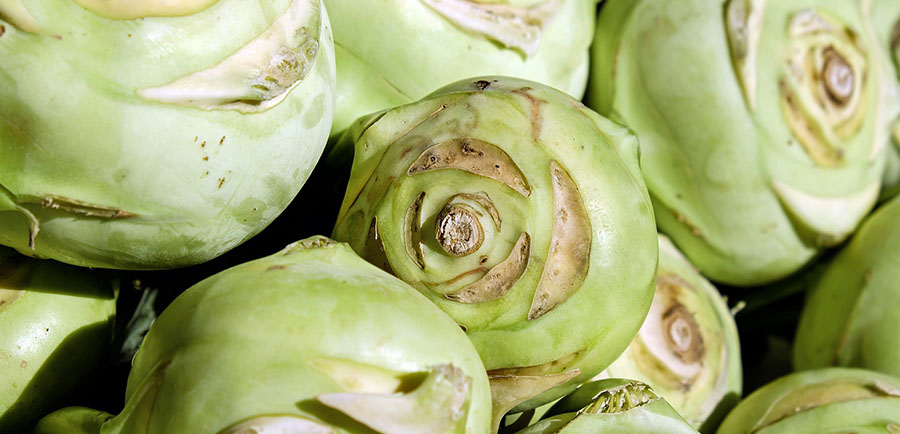
Kohlrabi is a cruciferous plant that is also referred to as a German turnip. It is, however, not a root vegetable. It is not a turnip but is cruciferous just like broccoli, Brussels sprouts, cabbage, bok choy, and mustard greens.
This vegetable has a round bulb and a long stem. Kohlrabi may be white, pale green, or purple on the outside and white-yellowish inside. As for the taste, it is a bit sweeter than a cabbage.
Benefits of Kohlrabi
A serving of raw kohlrabi contains 8 grams of carbs and 5 grams of fiber. It is also rich in vitamin C, protein, and vitamin B6. Other nutrients include potassium, magnesium, manganese, and folate.
This vegetable also contains a phytochemical that helps reduce risks of cancer, according to a study.
The vitamin C content in kohlrabi helps give your body protection from oxidative stress caused by free radicals. It also helps with iron absorption, immune health, and collagen synthesis.
There are also essential antioxidants in kohlrabi such as glucosinolates, isothiocyanates, and anthocyanins. These help protect your cells while reducing your risk of diseases including heart ailments, cancers, and inflammation.
This is also a good vegetable to eat for promoting gut health. As it is rich in fiber, it promotes regular bowel movements while preventing obesity.
How to Use it
Raw kohlrabi can be added to your salad by either grating or chopping it. You can also dip it in hummus as a healthy, low-calorie snack.
If you prefer to cook it, you may roast, sautee, or boil the bulb. As for the leaves, you can add it to soups or saute it in a stir-fry.
Take the 40-Day Transformation Course
God’s recipe for EXCELLENT HEALTH is where HEALING BEGINS
- Less Inflammation & Pain
- Weight Loss (I lost 60 lbs)
- Freedom from Food Addiction
- Crave God and Forgive Others
8. MUSTARD GREENS
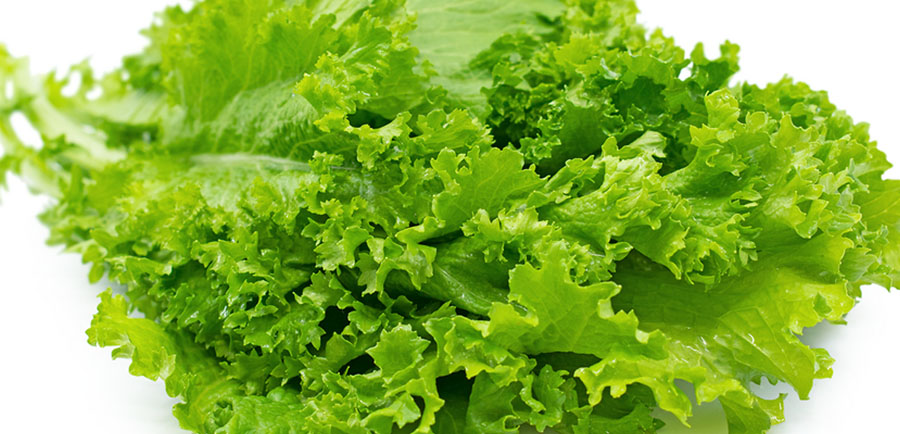
Mustard greens are pungent and a little bitter but loaded with phytonutrients. They are just like your collard greens, bok choy, and kale, which are from the cruciferous vegetable family.
These dark green vegetables are rich in vitamins, minerals, fiber, and antioxidants. Among the antioxidants in mustard greens are polyphenols and glucosinolates.
There is a wide variety of mustard greens, most are dark green but there are also purple and red greens. There are many species of mustard greens such as mizuna, Ethiopian mustard, Southern Giant Curled mustard, Chinese green mustard, Red Giant, and the Purple Osaka Leaves mustard.
Although mustard greens may not be so tasty on their own, you will be amazed by their nutritional value and antioxidant content. This is why it is a highly nutrient-dense food that you should include in your diet.
Nutritional Value of Mustard Greens
Mustard greens are loaded with antioxidants such as carotenoids, lutein, beta-carotene, isothiocyanate, aliphatic glucosinolate, and epithiopropane. These are essential nutrients that help defend and protect your body from oxidative stress.
The American Journal of Clinical Nutrition also stated a study that proves the importance of consuming cruciferous vegetables as a protection against cardiovascular disease.
By including mustard greens in your regular diet, you are giving your body an additional protection from premature aging, neurodegenerative diseases, and cancer development. Your cells can stay healthy longer, as well as your nervous, digestive, and cardiovascular systems.
Liver function is also improved with the support of the nutrients in mustard greens. The chlorophyll content is helpful for detoxifying the body while neutralizing heavy metals and pesticides.
Other health benefits of mustard greens include reduced inflammation, weight loss and diabetes control and management.
How to Use it
To conceal the bitter taste of mustard greens, you may sautee them to retain the flavor without significantly reducing the nutritional component. You may also add some salt and pepper for an enhanced flavor. Seasoning with curry powder and lemon juice also helps improve the taste.
You may also combine mustard greens with celery, cucumber, carrot, apple, and lemon in your salad. This helps tone down the peppery taste. In addition, try adding kale or spinach which have less intense flavors.
Making soup with mustard greens is another way to include this vegetable to your diet regularly. Just add in some tofu and other vegetables of your choice to come up with a delightful and soothing soup.
9. RUTABAGA
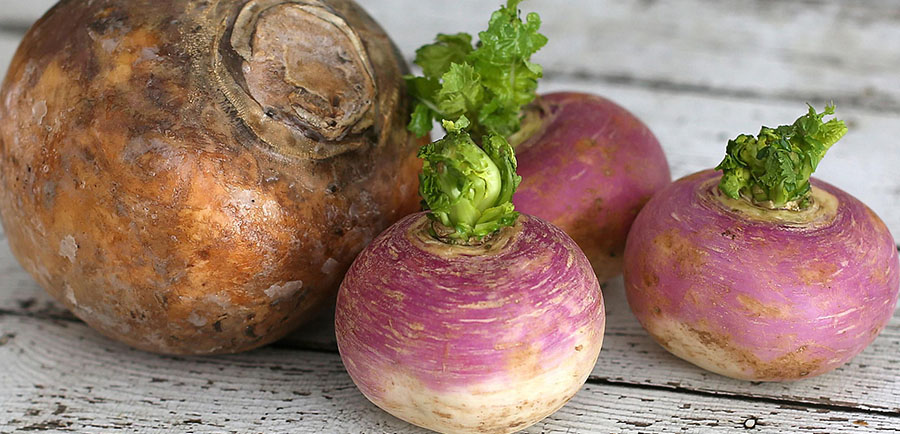
A rutabaga is a cruciferous that is also a root vegetable. It resembles a turnip, and it has a brownish-white exterior.
It is also known as Swedish turnip and typically found in Northern European cuisine. As for the taste, it is a cross between cabbage and turnip.
Health Benefits of Rutabaga
Just like other cruciferous vegetables, a rutabaga is low in calories. A medium-sized rutabaga, for instance, has 143 calories. It is rich in carbs, protein, and fiber, as well as vitamin C, potassium, and magnesium. There is also a small amount of vitamin E in it, which helps keep your skin healthy.
Rutabagas contain glucosinolates. These are special compounds with antioxidants that help reduce inflammation and heart diseases. The antioxidant has also been found to prevent cancer of the breast, prostate, and the colon.
With a high antioxidant component, rutabaga can help keep your skin look younger and strengthen your immune system. It protects your skin from UV rays and pollution, which minimizes oxidative stress.
How to Use it
There are a number of ways to prepare rutabaga. For instance, you can eat it raw and add to your salads. Some other ways to cook rutabaga include cooking it as you do your potatoes but be sure to remove the skin because of the wax coating it contains.
You may roast rutabaga in the oven, add it to your soup, mash it, cut it up and fry it, or grate it and sprinkle it on your salad. Because of the versatile quality of a rutabaga, it is a good alternative to turnips, potatoes, and cabbage.
10. TURNIP

This vegetable comes with a white, creamy color and a somewhat purple top because of its exposure to the sun.
Turnip is a cruciferous that is popular in Europe, and it is actually a cruciferous and not a root vegetable unlike what others think of it.
Both the leafy greens and the bulb-like portion of a turnip are tasty. These are also very nutritious, and you can include them to your dishes in a number of ways, which we will delve more on in a second.
Nutritional Profile and Benefits of Turnip
Turnips help with intestinal problems. It has a high fiber content that minimizes your risk of developing diverticulitis, colorectal cancer, and intestinal issues. It allows for bowel movements to pass easily because of the bulk that this vegetable provides.
The vegetable also helps reduce blood pressure levels. According to a study published in the British Pharmacological Society Journal, turnip is among the vegetables that contains dietary nitrates that regulate your blood pressure and promote cardiovascular health.
The potassium level in turnip also releases excess sodium out of your body. This is why it allows your arteries to dilate, which is important in decreasing high blood pressure.
How to Use it
Turnips have a peppery and zesty flavor. You can eat it cooked or raw, and it is also fine to roast turnips to ensure their optimal flavor and texture.
You may boil and mash it as a good alternative to potatoes. If you want to add it to your salad, you may do so by chopping or shredding raw turnips.
Another way to enjoy turnips is by adding them to your stew or soup. Including cubed turnip to slow-cooked roast is also a great recipe you can try.
Conclusion
God has designed food for us to enjoy and also to heal us from many ailments naturally.
Indeed, the Lord is not just our Savior but our greatest doctor!
So to achieve thriving health and serve God in the best way possible, we need to take care of our health and nutrition by eating the right food that our body will benefit from.
Be sure to maximize your vegetable intake and include these 10 cruciferous vegetables in your diet and reap the amazing rewards these have to your health, both physically and spiritually!




